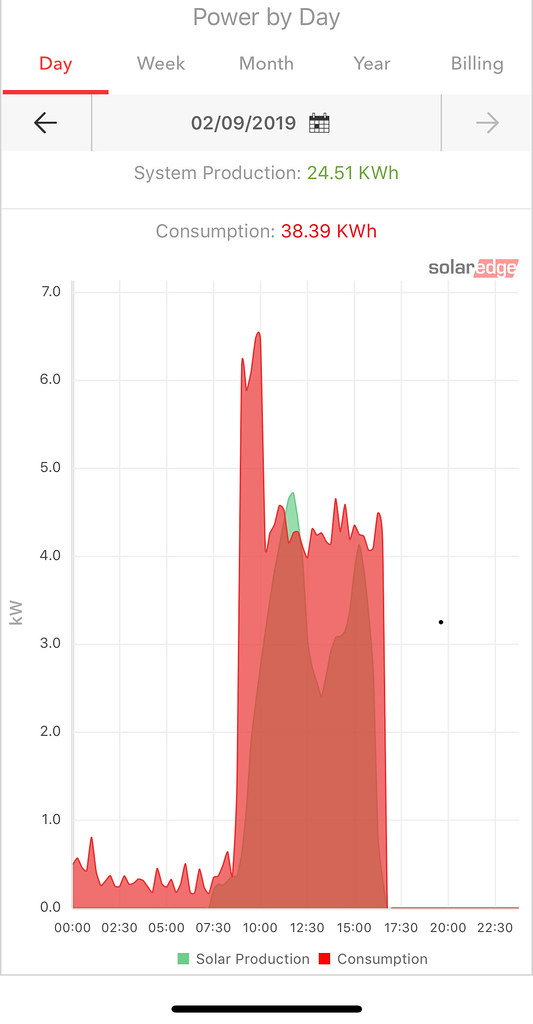With Net Metering my Solar pushes to the Grid at $.20 kWh (credit) and pulls from grid at $0.25 kWh
You can think of it as a 80% efficient PowerWall (with no vampire drain).
But if I can push that excess solar direct the car, it never reaches the grid and Solar goes to the car at 100%.
So I timed my charge and charge level to today's solar. I saved a whole $1.25
Come summer I could save maybe $3.00 a charge. I can often wait until the weekend to charge.
Be cool if I could automate it.
I tried to schedule the charge to come on when Solar started to ramp up. Stupid Schedule never started. I didn't wait that long though.
You can see I adjusted the max watts on the car from 24A to 16A.

You can think of it as a 80% efficient PowerWall (with no vampire drain).
But if I can push that excess solar direct the car, it never reaches the grid and Solar goes to the car at 100%.
So I timed my charge and charge level to today's solar. I saved a whole $1.25
Come summer I could save maybe $3.00 a charge. I can often wait until the weekend to charge.
Be cool if I could automate it.
I tried to schedule the charge to come on when Solar started to ramp up. Stupid Schedule never started. I didn't wait that long though.
You can see I adjusted the max watts on the car from 24A to 16A.



